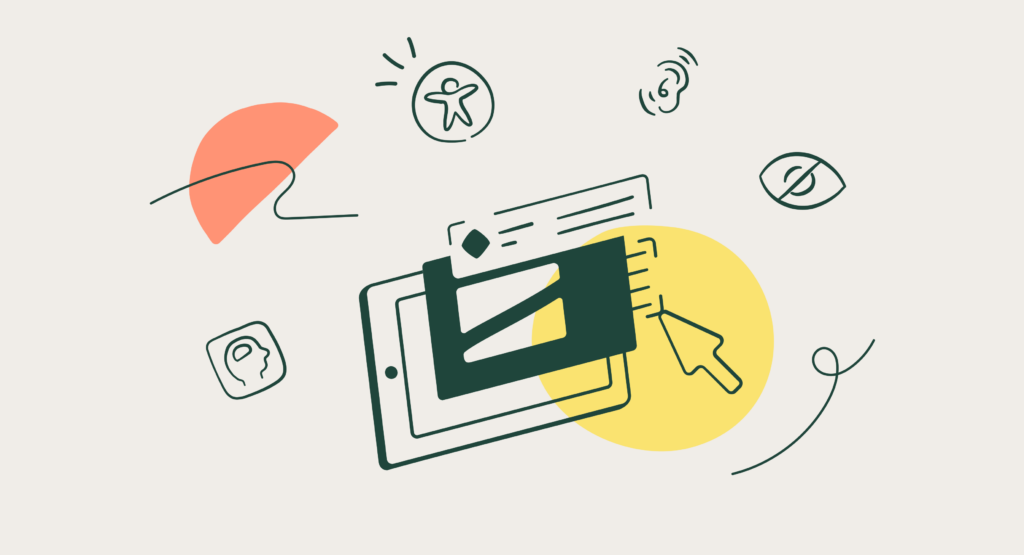Global Accessibility Awareness Day: What Is Accessibility?
Author
Felicia Tarantino
Date
May 18, 2023

On the third Thursday of each May, website developers, designers and industry professionals are invited to celebrate and participate in Global Accessibility Awareness Day, or GAAD. The annual event encourages conversation as well as education about digital access and inclusion, and in particular, how it pertains to the people behind website development.
This year marks the 12th anniversary of Global Accessibility Awareness Day. On this occasion, we will be discussing web accessibility and diving into everything you need to know what it is and why it’s important to the success of your website.
What Is Web Accessibility?
Before we get into the significance of accessibility, it’s important to understand what it actually means. In order for something to be accessible, it must be easily reached or used by anyone. When we talk about web accessibility in particular, we refer to the need for a website to be developed in a way that provides equitable access to everyone. This means that the individual needs of persons with disabilities must be accounted for every single web design.
Disabilities pertaining to web accessibility can take various forms, including:
- Auditory
- Cognitive, learning and neurological
- Physical
- Speech
- Visual
Accessible websites are built in accordance with a set of global standards known as the Web Content Accessibility Guidelines, or WCAG. In order to meet the guidelines, a website must be perceivable, operable, understandable, and robust. In the past, we laid out 12 tips for publishing inclusive content in accordance with these guidelines.
Benefits of Digital Accessibility
According to Statistics Canada, 1 in 5 Canadians have at least one disability which impacts their use of the web, among other daily activities. That being said, accessibility isn’t only beneficial for users with disabilities. In fact, an inclusive and accessible web design is universally beneficial. It serves both the user and the organization in a few important ways.
1. Social Responsibility
Every organization with an online presence has a social responsibility to have an accessible web design. It was reported that 96.8% of home pages were found to have detectable WCAG 2 failures. Paired with the staggering number of people worldwide who access the Internet on a regular basis, there’s no denying that this is a massive problem. As a Certified B Corporation, Plank is committed to upholding the ethical responsibility to optimize our website so that it is accessible by all and we encourage others to do the same.
2. Expanded User Base
Implementing a universally accessible web design is not only beneficial to users. It actually has a reciprocal effect. Businesses are positively impacted in that it expands their reach to users that may previously have been restricted from accessing their website. When we consider the number of individuals in North America who possess a disability, it is important to remember that they are a valuable part of any user base. Restricting this population from accessing your website only works to the detriment of your own business. Accessibility broadens your audience and allows more users to access your website and enjoy what you have to offer.
3. Legal Compliance
Creating a website that is accessible is not only beneficial, but often, it’s actually legally required in many countries. By law, a website must meet certain requirements and standards that are established in order to provide equal access to all, including individuals who have disabilities. These regulations are put into place to ensure that no one faces digital discrimination that prevents them from accessing information, resources, and services on the Internet.
4. Search Engine Optimization
When creating web content, Search Engine Optimization, or SEO, is always front of mind. Luckily, creating accessible content gives you an advantage in this area. The very principles we consider when developing websites with accessibility in mind typically go hand-in-hand with common SEO practices. Providing image alternative text, video captions, and audio transcripts for users improves ranking on search engines. Of course, duplicate content which leads to diluted keyword relevance is less common as well, due to the importance of creating unique titles and link text for easier navigation.
5. Improved User Experience
One of the most important aspects of creating a website is ensuring that there is a good user experience. A website developed for individuals with disabilities automatically improves the usability for all. Not only does it often lead to optimized performance and faster loading times, but it also creates an overall cohesive design that is easier to navigate. When following the guidelines for an accessible website, you are creating clear and well-structured content with plain language and consistent formatting.
The Future of Accessibility
More than ever, accessibility is becoming a prime concern in website design and development. At Plank, accessibility is front of mind on everything we do. But elsewhere, it is increasingly prioritized. This week, Apple announced that they will be introducing new accessibility features with their next software update, including customized assistive technology, enhancements to their Magnifier, and even a voice feature that supports users at risk of losing their ability to speak. We’re glad to see these major steps being taken towards creating a more inclusive and accessible world in the tech industry, and hope to see this trend continue.
